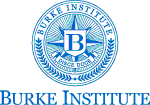|

The Burke Institute
presents
Applying Research and Insights: Customer, Brand, Product On-Site Training
The focus of this seminar is on the application of various marketing and marketing research and insights methods to specific decision areas involving your customer, brand and product/service.
Course Description/Agenda
WHAT YOU WILL LEARN
- Understand your customers, your products/services and your competitive environment.
- Segment your markets and position your products/services in the target markets
- Generate new product ideas, test concepts and products, measure market performance and track changes.
- Evaluate alternative pricing strategies and assess demand for current and new products.
WORKSHOP AGENDA
SESSION 1: CUSTOMER, BRAND AND PRODUCT DECISIONS
- Identifying management's strategic and tactical decision needs and linking research results to those needs
- Use and abuse of marketing research in the corporate environment
- A framework for assessing the role of marketing research in the planning process
- How to understand the client’s decision process and needs
SESSION 2: UNDERSTANDING YOUR CUSTOMERS – MARKET SEGMENTATION
- The need and the implications of understanding customer needs and adapting the marketing mix to specific segments
- The bases and the analytical tools used in segmentation research
- Presenting actionable segmentation results to management
- Case studies illustrating the methodology and applications of segmentation research
SESSION 3: UNDERSTANDING YOUR CUSTOMERS – CUSTOMER SATISFACTION / LOYALTY RESEARCH
- Components of a customer satisfaction monitoring program - discovery, benchmarking, tracking and implementation
- Key issues in customer satisfaction research - what to measure, from whom, how to gather the data and how to analyze and interpret it
- Applying customer satisfaction research results to business decisions
SESSION 4: UNDERSTANDING YOUR COMPETITION – MARKET STRUCTURE AND POSITIONING RESEARCH
- Defining and identifying competition
- Determining competitive market structure
- How to assess competitive positioning: qualitative procedures, including social media monitoring and establishing online communities
- Quantitative positioning: the considerations, key steps and analytical procedures
- Components of a competitive intelligence system; sources of competitive information
- Gaining competitive advantage
SESSION 5: MANAGING PRODUCTS AND SERVICES (Part 1): CONCEPT DEVELOPMENT AND OPTIMIZATION
- Research tools applicable at the various stages in a product's lifecycle, including research for new products, idea generation procedures, concept testing and concept optimization
- Analytical techniques such as conjoint analysis and discrete choice modeling useful in product research
SESSION 6: MANAGING PRODUCTS AND SERVICES (Part 2): RESEARCHING PRICE
- The decisions involved in choosing the best pricing strategy for a firm
- Information needed to make informed pricing decisions and how research can help
- Structured and unstructured approaches and analytical strategies to assess the impact of alternative prices and to help select the optimal price
- Price sensitivity measurement, conjoint analysis, discrete choice models and other analytical approaches in pricing research
SESSION 7: MANAGING PRODUCTS & SERVICES (Part 3): FORECASTING SALES & ADVERTISING RESEARCH
- Choosing the appropriate forecasting techniques by stage in product lifecycle
- Using test marketing and simulated test markets (STM's)
- Judgmental, time series and causal models for forecasting sales
- Conducting advertising research (Advertising decisions and supporting research methods; diagnostic and evaluative procedures to test advertising content and implementation; media/audience research for print, broadcast, and internet; ATU studies and tracking a brand’s progress over time)
|
 Add to favorites
Add to favorites
 Email this page
Email this page
|